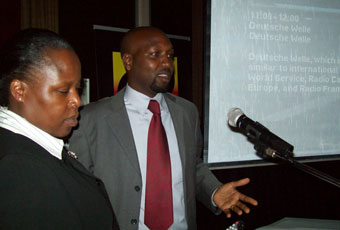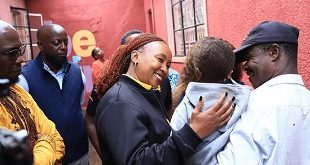
By Joshua Masinde
Ugandans are set to enjoy improved reception quality, a variety of channels, clear audio signals, and sharper visuals with the adoption of digital broadcasting.
The switch to Digital Terrestrial Television (DTTV) is being engineered by Next Generation Broadcasting (NGB) and Uganda Broadcasting Corporation (UBC).
NGB Executive Director Kwame Rugunda is positioning the switch from analogue to digital as mandatory. He says migration in Uganda should be completed by 2012, the same time as Europe.
This position is at odds with similar projects in other parts of the world.
In the UK, DTTV was launched in November 1998 as a private subscription service with only a few channels being available free to air. It failed financially because of failure to get subscribers, was rebranded, and failed again in 2002. It re-launched as a free-to-air in 2002. Private TV Broadcasters are unhappy that Rugunda’s company and UBC, who appear to have been handed a monopoly by the government are herding everybody in. They want a separate company to distribute the digital signals.
DTT is one of the delivery platforms for digital broadcasting. Other delivery platforms include Cable Television, IPTV, Mobile digital Television and Satellite digital television.
However Kwame Rugunda claims: “Digital Terrestrial Television is one of the delivery platforms for digital broadcasting, and is the way the majority of television owners in Uganda will continue to watch television after 2012, East Africa’s targeted switch over deadline,” Rugunda explained.
For the past 3 months, NGB in collaboration with UBC have been carrying out a DTT pilot project, in which they distributed sets and received signals in homes of about 200 pilot users in Kampala.
Seven channels have been running on the pilot service, five of which are local and two international ones, said Rugunda.
According to information on the Internet, DTTV is transmitted on radio frequencies through the airwaves that are similar to standard analogue television. It only differs because it uses multiplex transmitters to allow reception of multiple channels on a single frequency range (such as a UHF or VHF channel).
The number of channels is directly affected by the modulation method of the channel.
Advantages of DTTV include better overall reception, particularly with a good signal. With a weaker signal there is little perceptible difference, in fact analogue can be better. It is easier to host more channels, including interactive (red button) services.
The disadvantages include cost of new equipment, increased electricity consumption. Significantly, analogue requires lower signal strength to get a watchable picture. For example, with low signal strength an analogue picture gets fuzzy (but is still viewable) while a digital picture freezes and stops updating.
The switch to digital requires money and technical expertise.
Francis Babu, the Chairperson of the National Broadcasters Association (NBA), said while the shift from the old to the new system is good, the government should subsidise the cost of equipment in the digitalisation process.
“The expense of overhauling the equipment is going to be costly, and government subsidy is going to be needed,” he said.
Minister of Information and Communications Technology Aggrey Awori said his ministry has drafted a Digital Migration Policy to be tabled soon before the Cabinet. The policy will address key technical, operational and regulatory concerns of transition to Digital Television Broadcasting Technologies.
 The Independent Uganda: You get the Truth we Pay the Price
The Independent Uganda: You get the Truth we Pay the Price


